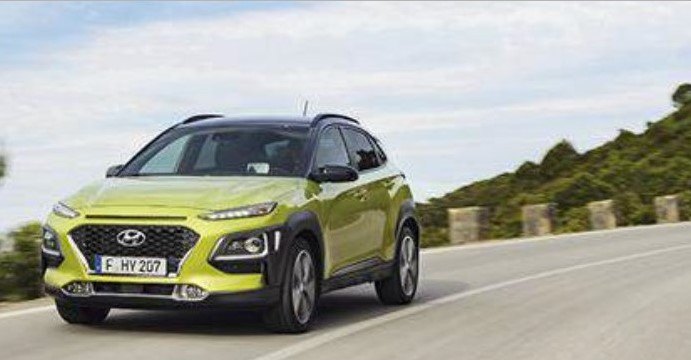Not So Scantily Clad: 2018 Hyundai Kona Accidentally Drops the Towel

The 2018 Hyundai Kona, which American subcompact crossover aficionados will be able to drool over in person in early 2018, will see its first spotlights during a Korean launch event tomorrow. However, much like private celebrity photographs, the Kona has bared all on the internet a day before the big reveal.
Hyundai hasn’t provided much in the way of specifications, though it has teased us with ever-revealing photos of its new global model for some time. For the automaker, a B-segment crossover isn’t timely — it’s overdue. Utility vehicles are the company’s top focus as the market moves away from the vehicles that sent Hyundai sales surging in the post-recession era.
So, what do you think?
The low-resolution images, which look sourced from a manufacturer’s media package, appeared on Hyundai-blog, providing us with a a good, hard look at the Kona. First impressions? Wow, that’s interesting — many might say “questionable” — use of cladding.
While the short overhangs and fender bulges are commonplace among the segment’s occupants, the industry has more or less moved away from garish overuse of cladding. Thank General Motors excess for that. However, the Kona’s cladding is apparently so voluminous, some of it has migrated onto the rear doors and fascia — the taillamps seem unable to wrestle themselves free from its matte gray grip.
The front displays the same face we’ve seen before, albeit in purposely shadowed form. Thin LED running lights are positioned atop the main headlamps, flanking a broad mouth filled with black honeycomb. An air inlet in the lower fascia carries a third set of lights — foglights — tucked into the corners of the slit.
All told, it’s a lot of lights and openings. Funky? Busy? Buyers will be the judge. Wearing pea soup-like yellow-green paint, the vehicle seen here clearly wants to show off an all-black roof that extends down the A-pillars but leaves the C-pillars mainly untouched. No doubt Hyundai believes this gives the little Kona a dash of sporty flair.
So, what engine can Americans expect? We’ll have a better idea tomorrow, but a turbocharged 1.4-liter four-cylinder and a dual-clutch transmission are strong powertrain possibilities.
Inside, the Kona displays a much more conventional layout, with an infotainment screen rising from the dashtop, rather than set into the center stack. Body color accents abound.
When Hyundai’s Kona lands in the U.S., both it and the Kia Stonic will have to beat off the Mazda CX-3, Chevrolet Trax and upcoming Ford EcoSport in the non-premium subcompact crossover segment.
[Images: Hyundai-blog.com]

More by Steph Willems
Latest Car Reviews
Read moreLatest Product Reviews
Read moreRecent Comments
- Jalop1991 is this anything like a cheap high end German car?
- HotRod Not me personally, but yes - lower prices will dramatically increase the EV's appeal.
- Slavuta "the price isn’t terrible by current EV standards, starting at $47,200"Not terrible for a new Toyota model. But for a Vietnamese no-name, this is terrible.
- Slavuta This is catch22 for me. I would take RAV4 for the powertrain alone. And I wouldn't take it for the same thing. Engines have history of issues and transmission shifts like glass. So, the advantage over hard-working 1.5 is lost.My answer is simple - CX5. This is Japan built, excellent car which has only one shortage - the trunk space.
- Slavuta "Toyota engineers have told us that they intentionally build their powertrains with longevity in mind"Engine is exactly the area where Toyota 4cyl engines had big issues even recently. There was no longevity of any kind. They didn't break, they just consumed so much oil that it was like fueling gasoline and feeding oil every time




































Comments
Join the conversation
I like it! It's got that funky Citroen C4 Cactus thing going on, and I think our market needs more of that.
NO, No, NO, I would not be seen dead in that vehicle.